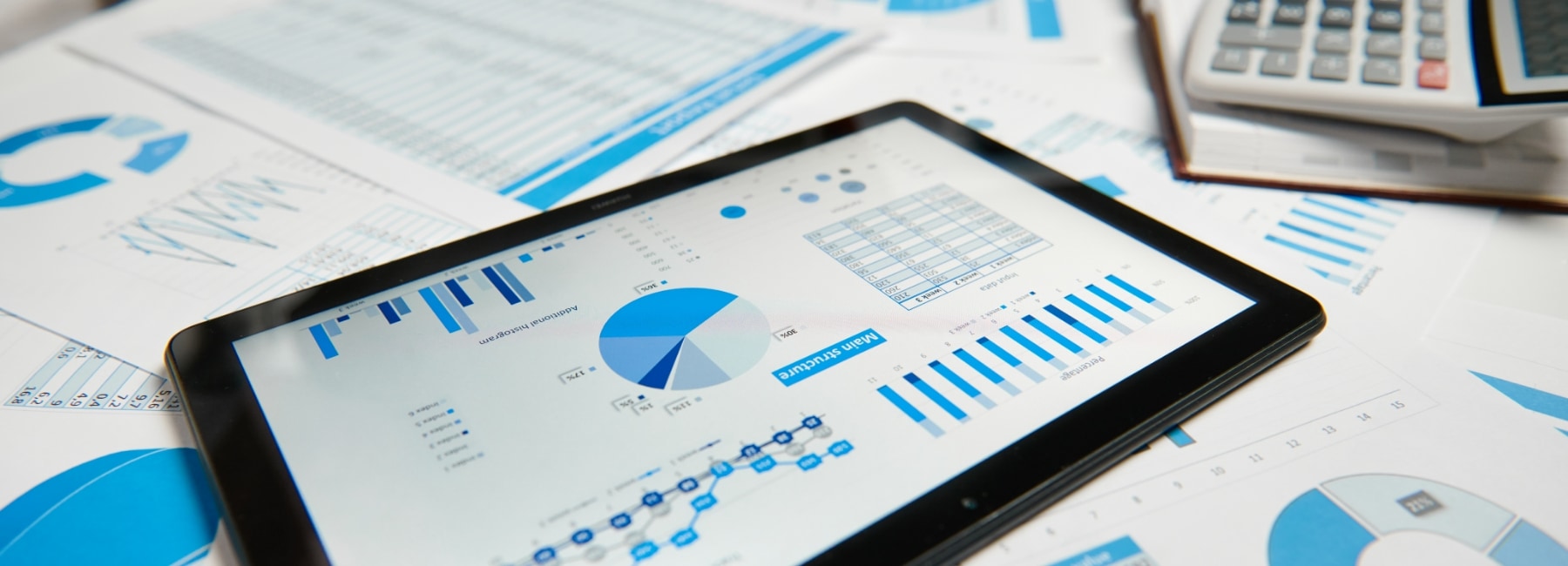Business Content
From A to Z: 26 Analytics Terms

The world of business analytics is full of specialized jargon and easily confused abbreviations.
Here, we’ll demystify 26 tricky terms you’re likely to encounter as a small-business owner:
Machine learning can be used to automate tasks, generate insights, and make predictions based on data analysis.
- A/B Test
An experiment in which two or more variants of a web page, ad, or email are compared to determine which one performs better in terms of a specific goal or metric, such as click-through rate or conversion rate. - Balanced Scorecard
A strategic management tool that provides a comprehensive view of an organization’s performance by measuring and monitoring key performance indicators (KPIs) across four perspectives: financial, customer, internal processes, and learning and growth. - Behavioral Analytics
The process of analyzing and interpreting user behavior data to understand how customers interact with a website, app, or product, and identifying opportunities to improve user engagement and conversion. - Big Data
A term used to describe the massive volume of structured and unstructured data that organizations generate and collect, often from multiple sources, and the advanced analytics tools used to process and analyze this data to gain insights and make better decisions. - Cash Conversion Cycle (CCC)
A financial metric that measures the length of time it takes for a company to convert its investments in inventory and other resources into cash from sales. - Churn Rate
A measure of customer retention that calculates the percentage of customers who stop using a product or service over a specified time period. - Conversion
The desired action visitors to a website or other customer prospects take, such as making a purchase or filling out a form. - Customer Acquisition Cost (CAC)
The cost of acquiring a new customer, calculated by dividing the total marketing and sales expenses by the number of new customers acquired. - Dashboard
A representation of key metrics that provides an at-a-glance view of an organization’s performance and helps decision-makers monitor progress toward business goals. - Data Visualization
The process of presenting data in a visual format, such as charts, graphs, or maps, to communicate complex information in a more accessible and meaningful way and enable decision-makers to identify patterns and insights that may not be immediately apparent in raw data. - Feasibility Study
A study that evaluates the potential success of a project or business idea by analyzing various factors, such as market demand, technical feasibility, financial viability, and organizational capability. - Forecast
An estimate of future trends or events based on past data and current conditions, which can help business owners make informed decisions and plan for the future. - Gap Analysis
An analysis that compares an organization’s current performance or capabilities with its desired state and identifies the gaps or discrepancies that need to be addressed to achieve its goals. - Geospatial Analytics
The process of analyzing and visualizing geographic data, such as maps and satellite imagery, to gain insights into patterns and trends related to location and geography. - Impression
A metric used in online advertising that counts the number of times an ad is displayed on a website or app, regardless of whether it is clicked on. - Key Performance Indicator (KPI)
A metric that reflects an organization’s progress toward achieving its goals and objectives and helps track performance over time. - Liquidity Ratio
A ratio that measures an organization’s ability to meet its short-term financial obligations, such as paying bills and debts, by comparing its current assets to its current liabilities. - Machine Learning (ML)
A type of artificial intelligence that enables computer systems to learn from data and improve their performance over time without being explicitly programmed. In business, ML can be used to automate tasks, generate insights, and make predictions based on data analysis. - Metadata
Data that provides information about other data, such as the structure, format, and meaning of data elements, which can help organizations manage, organize, and analyze large datasets more effectively. - Net Promoter Score
A customer loyalty metric that measures the likelihood of customers recommending a product or service to others, based on a 0 to 10 rating scale, and can be used to track customer satisfaction and loyalty over time. - Rollup
A technique used in data aggregation that combines or summarizes data from multiple sources or levels into a higher level view, which can help provide a more comprehensive and meaningful picture of performance. - Search Engine Optimization (SEO)
The practice of optimizing website content and structure to improve its visibility and ranking in search engine results pages (SERPs), which can help drive more traffic and leads to a website. - Six Sigma (6σ)
A methodology for process improvement that aims to minimize defects and errors by identifying and eliminating sources of variation in business processes, using statistical methods and data-driven analysis. - Validation
The process of verifying and ensuring the accuracy, completeness, and consistency of data, models, or systems, which is crucial for making informed business decisions based on reliable information. - Working Capital Management
The analysis and optimization of a company’s short-term liquidity, cash flow, and operational efficiency to ensure that the business has sufficient resources to meet its financial obligations and pursue growth opportunities. - Z-Score
A statistical measure that predicts the likelihood of a company going out of business based on its financial health and stability.
Defining Success
If you’re ready to put your knowledge into action, consult your financial institution.